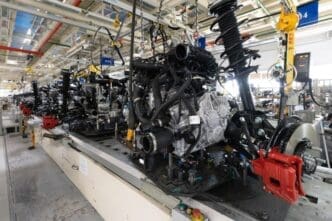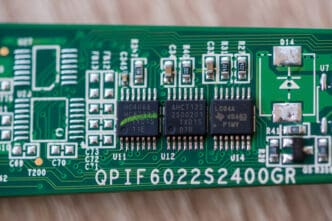President Donald Trump has frequently emphasized tariffs as a means to rejuvenate American factory jobs, particularly in the auto industry, which he believes have been undermined by unfavorable trade agreements like the North American Free Trade Agreement (NAFTA). He asserted that American steelworkers, auto workers, farmers, and skilled craftsmen have suffered significantly due to foreign competition and unfair trade practices. Trump’s introduction of a 25% tariff on imported cars aims to elevate costs enough to stimulate the construction of new auto plants in the United States, thereby increasing auto jobs domestically.
However, the decline in auto jobs, particularly in the upper Midwest, is a multifaceted issue not solely attributable to trade agreements or production shifts to low-wage countries. American consumers’ preference for foreign competitors over Detroit automakers, due to perceived quality and value deficiencies, contributed significantly to the problem. Moreover, automation has drastically decreased the time required for car assembly, significantly impacting job numbers. Automation, not trade deals, has been the leading factor in reshaping the auto industry landscape, reducing the labor needed to assemble vehicles substantially over the decades.
The introduction of automation coincided with trade liberalization, exacerbating job losses in the auto sector. Despite these challenges, data from the U.S. Labor Department indicates that more workers are currently employed in U.S. assembly plants than when NAFTA was enacted in 1994, with American plants producing significantly more vehicles than their Mexican and Canadian counterparts last year. Industry experts generally agree that while trade deals have some impact, automation and market share losses are the primary reasons for factory closures.
Automation has transformed the manufacturing process, drastically reducing the labor hours needed to assemble a vehicle. This reduction, coupled with Detroit automakers’ loss of market share, led to numerous plant closures. Once dominating over 80% of U.S. car sales, the Big Three automakers—General Motors, Ford, and Chrysler—now hold a significantly smaller market share, impacted by competition from Japanese imports and quality and design issues from previous decades. Despite improvements in quality, U.S. automakers have struggled to regain the customer base they lost to foreign brands.
Foreign automakers have not only gained market share but have also established U.S. plants, primarily in nonunion, lower-wage states. These plants, despite contributing to job creation, do not equate to the high-paying unionized positions once prevalent in the industry. Last year, foreign brands produced nearly as many vehicles in the U.S. as domestic manufacturers, illustrating a shift in the industry’s landscape.
NAFTA’s implementation resulted in a surge of assembly plants and auto parts factories in Mexico, making it a crucial player in the North American auto market. Many automakers operate as though the U.S., Canada, and Mexico are a single market, leveraging the free movement of parts and vehicles across borders. Despite this, U.S. auto plants remain dominant within the North American market, assembling a significant majority of cars produced in the region.
Tariffs alone are unlikely to reverse the trend of foreign plant establishment in the U.S. or significantly repatriate jobs from Mexico, given the complexities of relocating plants and the high level of automation required to compete with lower-wage markets. The focus is likely to remain on enhancing American workers’ skills in robotics and automation, emphasizing efficiency over sheer employment numbers.
The Bigger Picture
For American workers and communities, the emphasis on automation and robotics implies a shift in the skill sets required for future employment in the auto industry. While tariffs may create some opportunities for parts manufacturing to return to the U.S., the overall impact on job numbers may be limited. Job growth, if any, is expected to be modest, and the nature of these jobs will likely differ significantly from traditional assembly line roles.
Consumers may face higher prices for imported vehicles due to tariffs, potentially impacting purchase decisions and ultimately influencing market dynamics. As the industry evolves, the focus will likely shift toward training programs that equip workers with the skills necessary for new roles in a more automated manufacturing environment, aiming to balance job creation with technological advancements.








